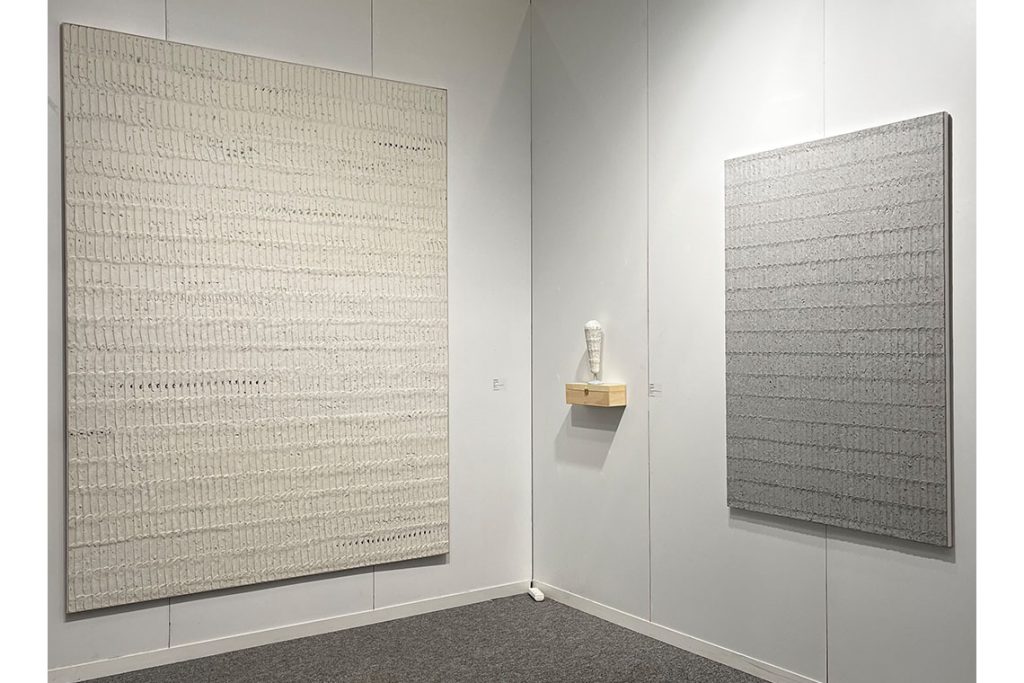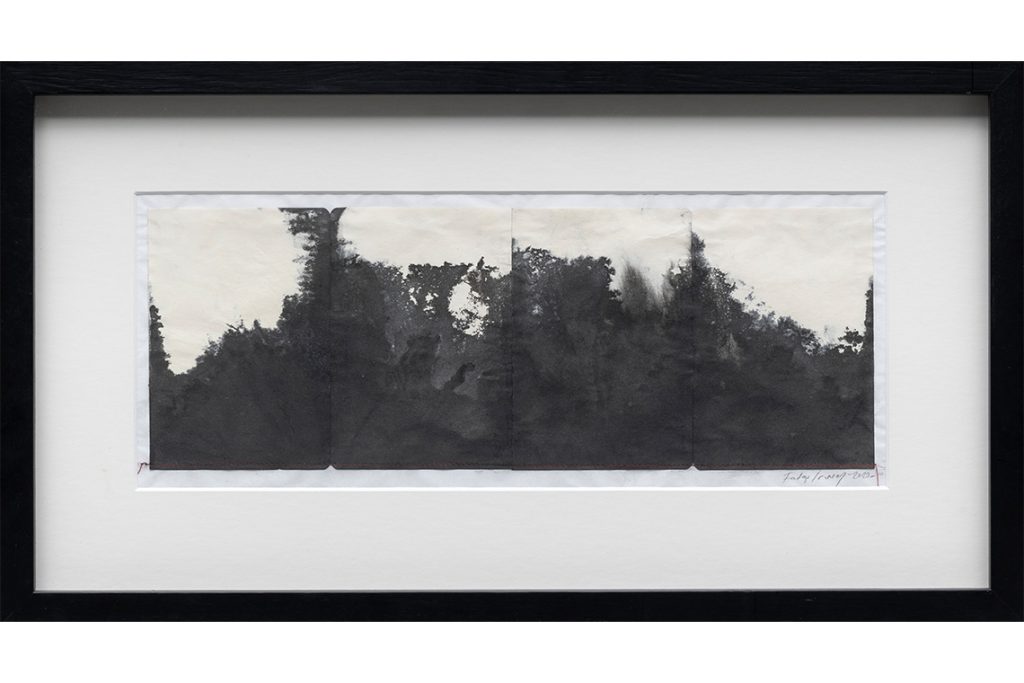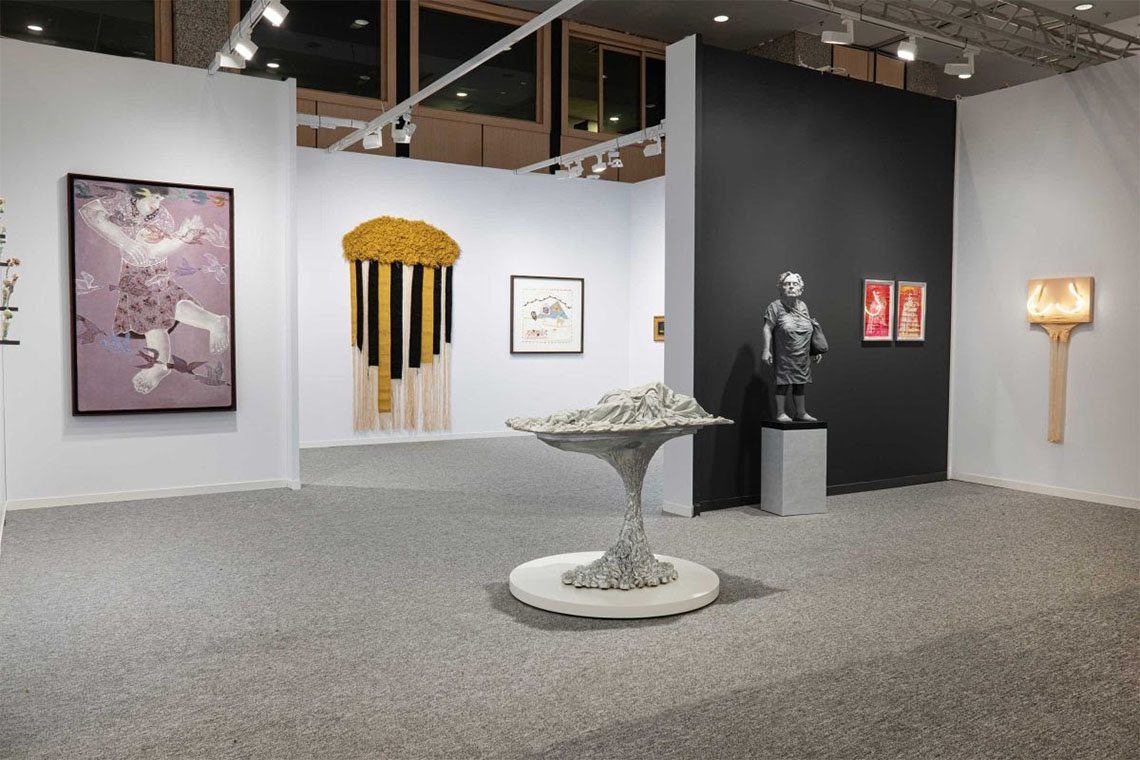The fourth edition of Contemporary Istanbul BLOOM (CI BLOOM) is an intimate and forward-thinking fair which creates opportunities for engagement with audiences that larger fairs might struggle to reach.
CI BLOOM, the little sister of the larger Contemporary Istanbul art fair, which takes place in September, is almost disconcertingly small. Some 25 galleries have gathered under the roof of Lütfi Kırdar Convention and Exhibition Centre Rumeli Hall (compared to the usual 70 or so at the main fair), creating an intimate atmosphere which allows fairgoers to move through the fair at a slower pace. The reduced scale helps visitors engage more fully with the work on display, something that can be a struggle at larger and more visually overwhelming fairs.
Speaking to a small number of international journalists during the preview days of the fair, CI chairman Ali Güreli emphasised the aim to attract what he dubbed the “nouveau riche” crowd of art collectors, namely those still discovering the art market and shaping their aesthetic tastes. The other primary purpose of CI Bloom is to put the spotlight on art made in Türkiye, with a focus on emerging artists from all over the country, including those based in more remote areas and who may not always get the chance to show in the larger Istanbul events.
Güreli’s objective of seizing the opportunity to help influence the artistic taste of young budding collectors reflects the commercial aims of a fair like CI BLOOM, while also fuelling the wider aim of creating dialogues between generations and around the issue of diversity. Several galleries are promoting artists from Kurdish or Armenian backgrounds, including Rıdvan Kudau Gallery from Diyarbakır, a city with a predominantly Kurdish population, and Istanbul’s Gallerı 77, which is seeking to build links between Armenians and Turks.

Some of the artwork on display comes across as much more experimental than one might typically expect from a commercial art fair. Anna Laudel Gallery has one of the more striking setups and a few unusual pieces, including a curious work by Server Demirtaş that visibly draws in visitors as they amble through the fair. Perched atop a plinth is his statue of a short, disgruntled woman with a cigarette in her mouth and a key around her neck. At first glance, she appears immobile, staring off into the distance, as we imagine her after a long day at work, waiting for the bus in the summer heat. But then, in a move as subtle as a trick of the light, her head tilts slowly upwards in a cyclical movement, part of a mechanical movement which is a trademark of the artists’s practice. Demirtaş also presents a statue of a human shape under a rubber sheet, which rises and falls with the breathing pattern of a restless sleep, in a disturbingly realistic repeated movement.
Other galleries, like Pi Artworks, which has participated in Contemporary Istanbul since its inception and has spaces in both Istanbul and London, have opted to present their booth as a meeting point between generations. Osman Dinc, who has been with the gallery for over a decade, is featured alongside relative newcomer Albano Hernandez, a Spanish artist discovered by the gallery in London. Speaking to Canvas, Hernandez explained that his large canvases – composed of layered pieces of air-dried clay mixed with waste material – are a comment on food and meat production in particular. The slices of clay certainly provoke an almost visceral feeling of discomfort.

Pi Artwork founder Jade Y Turanli emphasises the gallery’s desire to create bridges between Turkish and international artists, as well as underlining Contemporary Istanbul’s key role in the city’s art scene. “Our region is very sensitive, with an unpredictable economy, but CI has always been there for us,” she says. “Now the new generation is discovering our galleries, and Bloom is best place to encounter the local art scene.”
The two largest booths at CI Bloom are presented by Zilberman and Dirimart, well-established galleries with robust international presences. At Zilberman, the well-curated narrative of the works selected for the fair contains some overtly political undertones and messages. Zilberman programme manager Aybüke Sanuç explains that while the gallery works primarily with mid-career artists, it also holds an annual open call for emerging artists. “We are looking for artists with a political angle to their work, and trying to create this safe space for them, which is not the norm for a huge gallery, she explains. One of the gallery’s artists, Fatoș İrwen – whose work depicts the Hevsel Gardens in Diyarbakır – is of Kurdish descent and was imprisoned for several years for her political beliefs.
While seeking primarily to harness and inform the emerging tastes of new collectors, this year’s edition of CI Bloom is also giving airspace to thornier subjects that engage with the current cultural climate and which might be glossed over in a more overtly commercial art fair. A refreshing frankness on the part of fair representatives, galleries and artists alike demonstrates that an art fair focused on local and emerging talent can also be an opportunity for some risk-taking, a welcome development in the context of commercial art fairs, which all too often dim and mollify creative expression so as not to upset the status quo.



